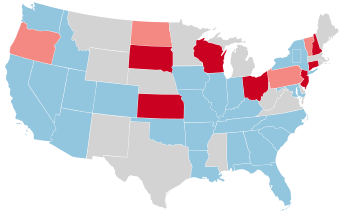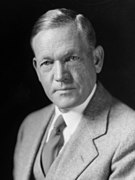| ||||||||||||||||||||||||||||||||||||||||||||||||||||||||||||||||||||||||||||||||||||||||||
35 of the 96 seats in the United States Senate 49 seats needed for a majority | ||||||||||||||||||||||||||||||||||||||||||||||||||||||||||||||||||||||||||||||||||||||||||
|---|---|---|---|---|---|---|---|---|---|---|---|---|---|---|---|---|---|---|---|---|---|---|---|---|---|---|---|---|---|---|---|---|---|---|---|---|---|---|---|---|---|---|---|---|---|---|---|---|---|---|---|---|---|---|---|---|---|---|---|---|---|---|---|---|---|---|---|---|---|---|---|---|---|---|---|---|---|---|---|---|---|---|---|---|---|---|---|---|---|---|
| ||||||||||||||||||||||||||||||||||||||||||||||||||||||||||||||||||||||||||||||||||||||||||
 Results of the elections: Democratic hold Republican gain Republican hold No election | ||||||||||||||||||||||||||||||||||||||||||||||||||||||||||||||||||||||||||||||||||||||||||
| ||||||||||||||||||||||||||||||||||||||||||||||||||||||||||||||||||||||||||||||||||||||||||
The 1938 United States Senate elections occurred in the middle of Franklin D. Roosevelt's second term. The 32 seats of Class 3 were contested in regular elections, and special elections were held to fill vacancies. The Republicans gained eight seats from the Democrats, though this occurred after multiple Democratic gains since the 1932 election, leading to the Democrats retaining a commanding lead over the Republicans with more than two-thirds of the legislative chamber.
A contemporary account[1] cited a number of reasons for the losses suffered by the Democrats. The Recession of 1937 had continued into the first half of 1938, and had arguably weakened public confidence in the administration's New Deal economic policies, along with controversy over the Judicial Procedures Reform Bill of 1937 (Roosevelt's "court-packing" plan).
There were, in addition, strains between the more liberal New Deal supporters and the conservative wing of the Democratic party centered in the Southern states, which were exacerbated by an effort led by President Roosevelt to target certain conservative senators for defeat in Democratic primaries, including Walter George of Georgia, Millard Tydings of Maryland, Robert Rice Reynolds of North Carolina, and Ellison Smith of South Carolina. While a number of New Deal supporters won primary elections, such as Alben Barkley in Kentucky, who defeated Governor Happy Chandler, James P. Pope of Idaho, a prominent New Deal supporter, lost his bid for re-nomination, as did California's William McAdoo — though McAdoo's Democratic opponent, Sheridan Downey, had campaigned as a liberal New Dealer on many issues who would also do more to improve pension plans.[2]
President Franklin D. Roosevelt had faced opposition from conservative Democrats and the Republicans in Congress since the beginning of his presidency. Josiah Bailey, Edward R. Burke, Harry F. Byrd, James F. Byrnes, Walter F. George, Peter G. Gerry, Carter Glass, Pat Harrison, Rush Holt Sr., Kenneth McKellar, and Ellison D. Smith were the conservative Democratic senators that opposed Roosevelt's policies although Harrison, Burke, Byrnes, and McKellar had initially supported the First New Deal. Vice President John Nance Garner pushed for Roosevelt to support more conservative policies. The Republicans gained eight seats in the Senate while the Democrats maintained their majority. However, there were around twenty unreliable Democratic votes for Roosevelt which allowed conservatives to block some of his policies.[3]
- ^ 1939 Britannica Book of the Year, "Democratic Party". pp. 205–206.
- ^ LIFE. Time Inc. 1994. p. 13. ISBN 978-0-88682-602-4. ISSN 0024-3019. Retrieved October 5, 2014.
- ^ Murphy, Paul (1974). Political Parties In American History, Volume 3, 1890-present. G. P. Putnam's Sons.
© MMXXIII Rich X Search. We shall prevail. All rights reserved. Rich X Search


